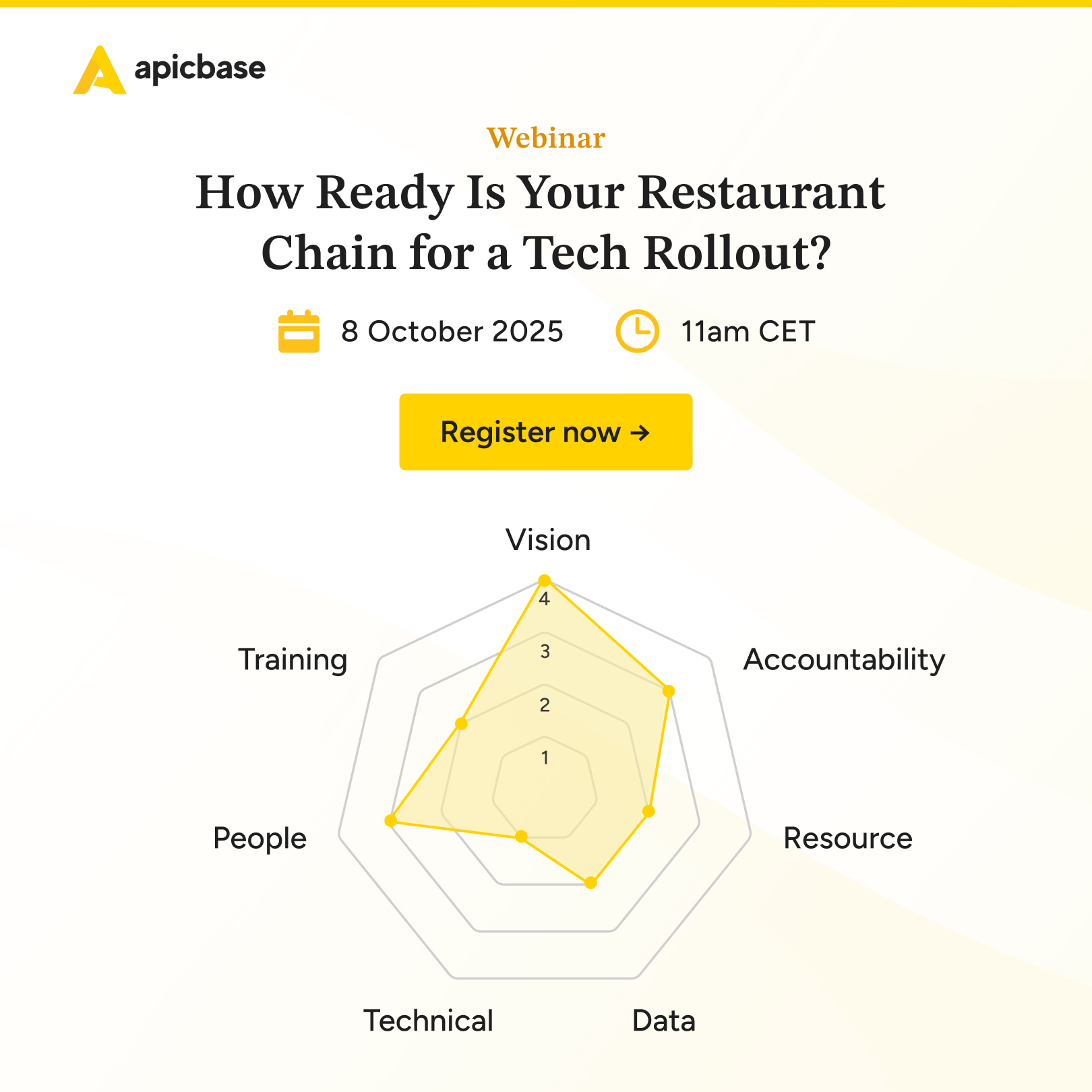Governments all over the world are taking bold but necessary measures to slow down the spreading of the coronavirus.
One of those actions is to close down the dine-in service of restaurants (or to discourage people from visiting food businesses).
Restaurant owners are making the best out of the situation by turning their businesses into a takeout or delivery-only operation.
A lot of food service businesses already have a well thought out delivery and/or takeout channel in place.
If that’s not you, then you probably have a lot of questions.
We have compiled a checklist on how to turn a dine-in place into a takeaway or delivery business.
Whatever you choose to do, make sure your staff and customers are safe. People are encouraged to work during the coronavirus outbreak but very strict hygiene rules apply.
Keep the ideas below in mind when switching from a dine-in restaurant to a takeout- or delivery-only place.
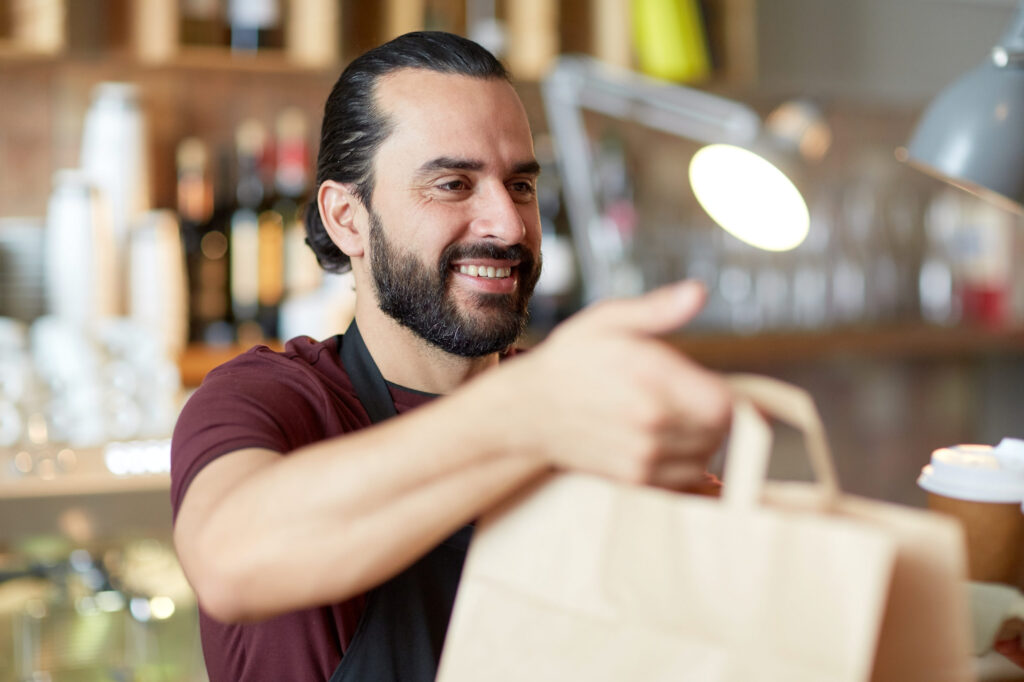
1. Organise incoming orders
Be ready when the orders start rolling in. Decide how you are going to handle them.
Ask yourself,
- which channels will I use for incoming orders?;
- how will I communicate with customers about their orders?;
- how am I going to keep track of everything?
Remember, orders no longer have a table number attached to them but a name and a pickup-time.
Take extra care when noting down orders over the phone or elsewhere. Ask for a name, address and contactdetails. Inform your staff to do the same.
If you plan on doing home delivery contact one of the many well-organised third-party delivery services like Ubereats or Deliveroo. And if you are going to work with several of these services at the same time, consider an app like Deliverect to help you organise the delivery orders.
Should you decide to organise the deliveries yourself, then consider repurposing your staff to do handle this important task. But if you do, don’t forget to give your insurance agent a call!
2. Curate your menu
Don’t make the entire in-house dining menu available for take-out, you’ll be in the weeds before you know it.
Create a menu that is customised for delivery.
Answer these questions before you start planning your takeout menu:
- Will the dishes be ready-to-eat or ready-to-heat?
- Which recipes are easy to prepare and ready quickly? (people want their food instantly)?
- Which recipes have the most sub-recipes and ingredients in common to allow for an efficient prep? Choose recipes you can make in bulk and that are easy store.
- Which dishes are easy to pack and transport?
- How many people do you have available in the kitchen and will they be able to take care of your takeout-menu?
- Is your takeout-menu well-balanced? Preferably choose dishes that are popular and/or low cost (either in production or procurement).
- Is the menu not too complicated? If you are handling orders over the phone, you don’t want your staff to waste valuable time by answering the same questions over and over again.
If necessary, think about developing menu-items specifically for takeout.
Apicbase can help you with the menu optimisation. Our system calculates recipe and menu costs and combines the results with the sales data to help you engineer menus that are both profitable and popular.
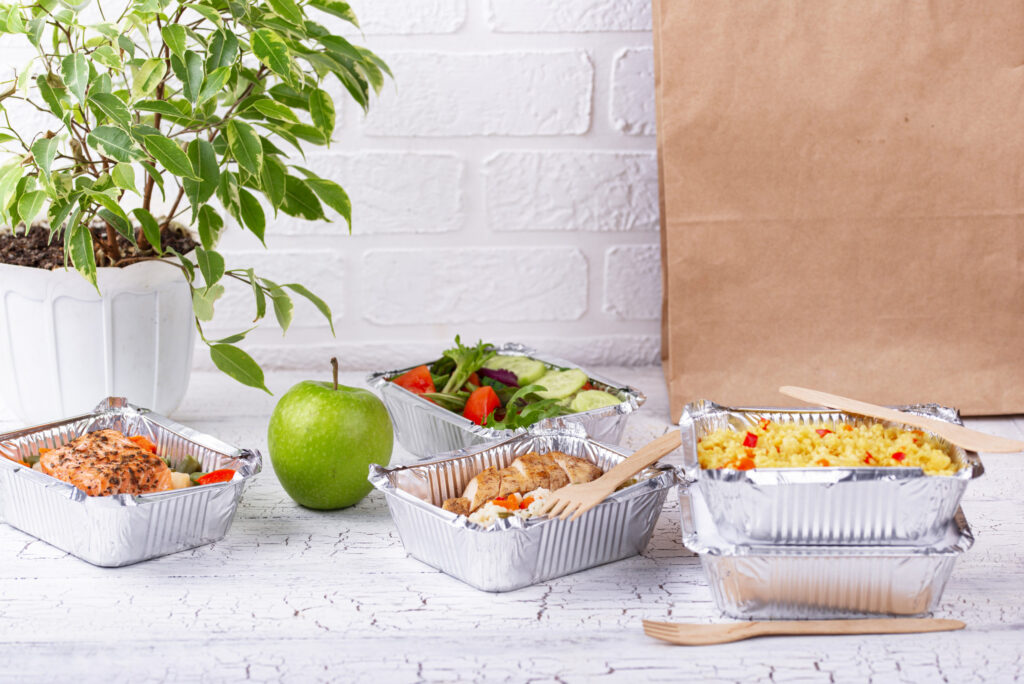
3.Take packaging seriously
You don’t want customers to find a big cold mess when they open your food box.
Avoid this unsavoury situation by having the proper packaging ready for each menu-item, including the sauces and salads.
What choice of packaging materials are available?
Let’s have a look.
There is a variety of materials available and each has its own pros and cons:
- Styrofoam is a good insulator. It helps to control the temperature of hot and cold foods, but it’s bad for the environment.
- Plastics are perfect to protect your meals but their position on the eco-friendly-scale also is far below zero.
- Cardboard is biodegradable, cost-effective and sturdy. If you are offering pizza they are the packaging of choice but they can get soggy. So careful about what you use it for.
- Sustainable packaging often is more costly but apart from the fact that is far better for the environment, it is also better for your brand and gives your food an instant premium look.
4. Plan production like a boss
If you can seat 300 people from 7 – 10 PM, you’ll plan production around the reservations and likely walk-ins. In any case, the number of seats remains the same.
With takeout or delivery, there are no certainties.
You have to plan production around orders that come in whenever and the food has to be ready in the blink of an eye. Your customers don’t know they’ve ordered at exactly the same time as 50 other families. 30 minutes later they all rock up at your place.
Your mise en place has just become more important than ever.
But you can’t overload the fridges and freezers. You’ll need every bit of available storage room you have. (This is where the customised delivery menu comes in handy as well.)
Procurement perfection is important. Order only what you need, when you need it, and keep inventory slim.
Apicbase can help you make procurement cost-effective and automate inventory control so you won’t lose valuable time on stock counts and updating spreadsheets. And the system automatically generates bills of materials based on the desired number of portions and stock status.
To make sure everything goes swimmingly you’ll need the right recipes to make it happen. Think stews and sauces that can sit au bain-marie, products that only need reheating and portions that are in the fridge and ready to go. Our recipe management module in the software quickly finds the recipes that have low prime cost and yield the most profit.
Train your team. Discuss a strategy and make sure everybody knows exactly who is responsible for which tasks.
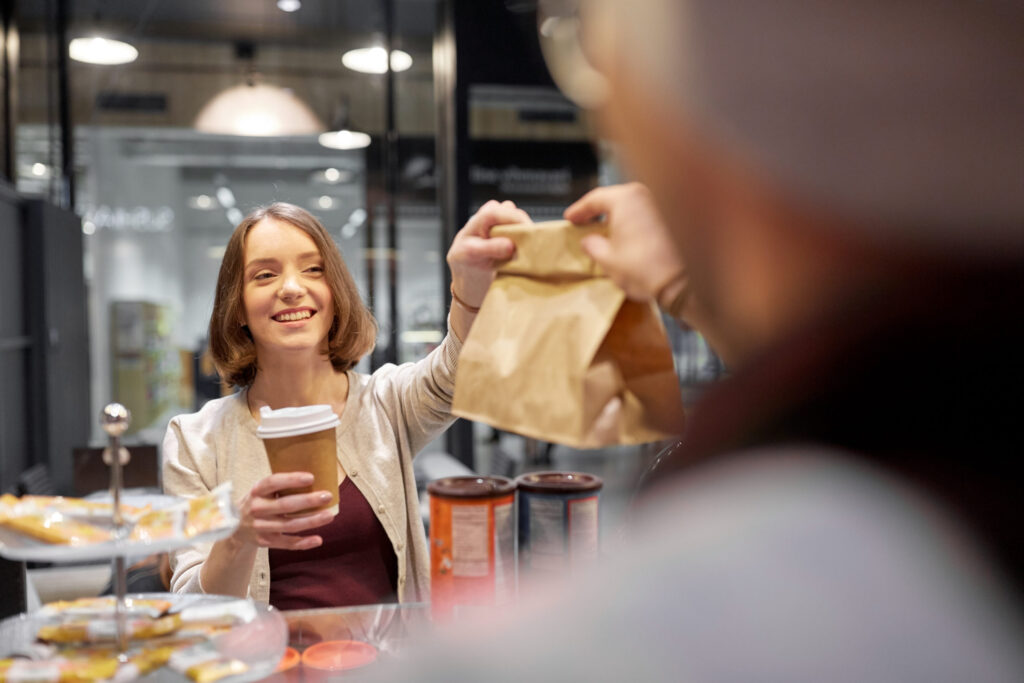
5. Establish a pick-up protocol
People are anxious about getting infected by the coronavirus and maybe even feel a bit guilty about going out in the street to pick up food.
People want to do the right thing, so reassure them.
Show customers you are not taking any chances and implement a rigorous pick-up protocol – if you are doing takeout.
Reorganise the dining area to create a super easy in- & outflow, put up a rope for people to follow and markers on the floor to indicate where – and how far apart from each other – they have to wait. Why not make it a bit festive by laying down a red carpet to show everybody where to go.
Clean surfaces regularly. Use plastic gloves. Leave the detergent where people can see it and place hand sanitizers for customers to use.
Adopt a no cash policy. And encourage customers to use tap & pay or contactless paying.
Check out this excellent example of a well-communicated pick-up protocol by Mercato pizzeria.
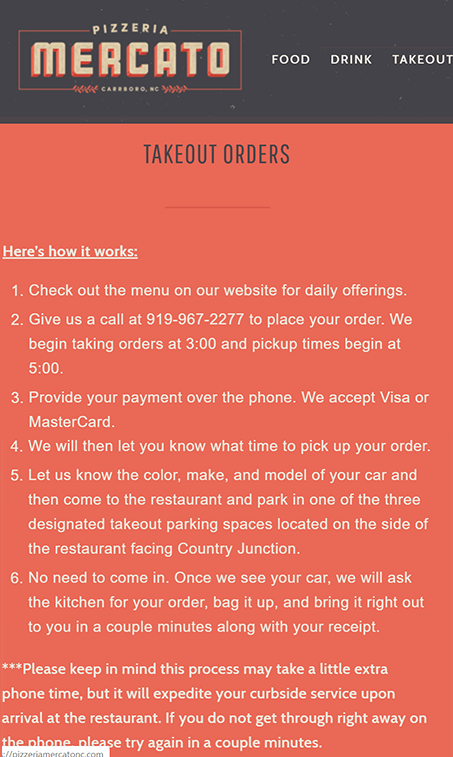
6. Get the message out there
Let everybody know you are open for business and ready to take orders for takeout or delivery. Start with the regulars and take it from there. Send a personal and engaging direct mail to tell them what’s on offer.
Think ahead and answer the questions your customers are likely to have.
Like why you are doing this,
why their favourite dish isn’t available,
And if the meals are prepared in safe conditions?
Be reassuring and positive.
Use social media to spread the word.
And don’t forget to redirect customers to the right channels. If not your inbox and phone will overflow with food orders and… complaints.
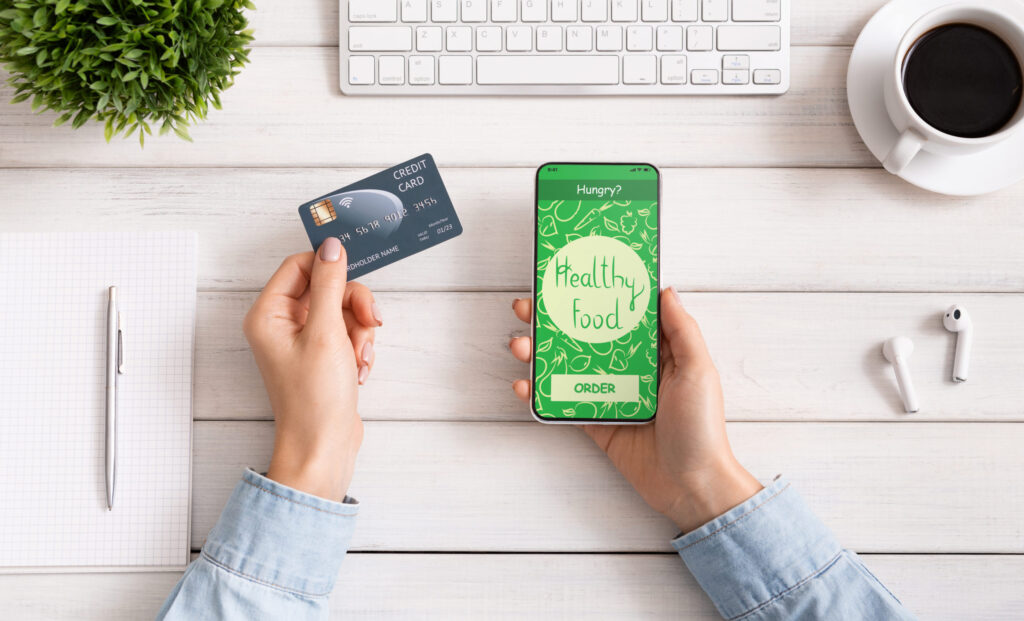
7. Change the landing page on your website
People will check your website now more than ever. Make sure they find the information they need straight away.
Don’t make customers look for what they need to know.
If you are handling orders online place a big ‘Make your order’-button smack in the middle of the homepage and in the navigation.
8. Be extraordinary
Include a personal thank-you-note with the food and advise your customers on how to best serve, reheat, and store your food.
Also, add a reminder to place a new order or offer a coupon for when the dining area re-opens.

Conclusion
The coronacrisis is affecting hospitality businesses worldwide.
The industry is supportive and actively helping to secure the safety of their staff and patrons – even if that means closing down for the time being.
Meanwhile, operators are looking in every direction to find ways to bridge this situation in a meaningful way.
(Also read: Coronavirus: what about inventory when your restaurant has to suddenly close its doors?)
We sincerely hope you’ll find ideas and inspiration in here to help you transform your in-house dining restaurant temporarily into a takeout or delivery business.
Get in touch
Apicbase is cloud-based. All you need is a password and a WiFi-connection.
Get profitable insights, boost your back of house, save time and reduce prime costs.



